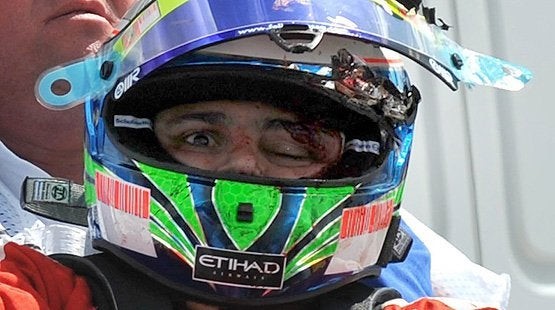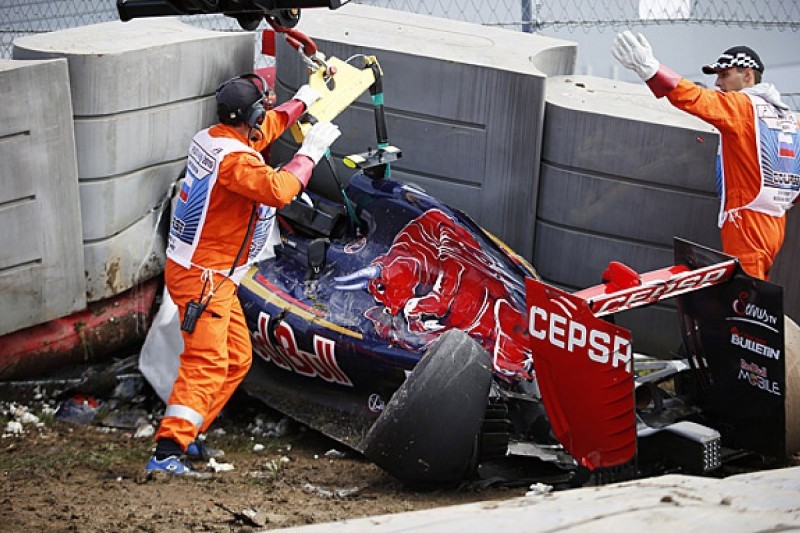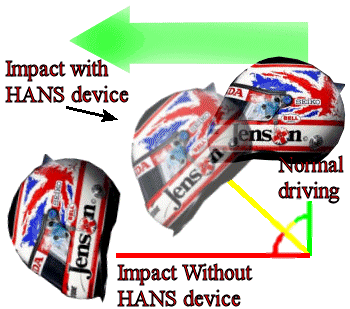
When we speak of cars, one thing that comes to mind is speed. The panicle of speed is Formula 1. These are the world’s fastest cars, constructed by world-class companies and driven by world-class drivers. F1 cars are not just fast; if it were just a straight line you need to drive in, that would have been too easy; here, drivers are tested with high-speed straights and corners. The slightest mishap could send the driver flying at speeds of up to 250 km/hr. The cars travel at a top speed of about 310kms/hr. and an average speed of around 280km/hr. per race.
Many people argue that this is not even a sport but a rich man’s game. I strongly disagree with this statement, as the drivers are at constant risk of just getting into the car. It is said that drivers lose up to 3kgs per race, which lasts for about 2 hours.
Formula 1 isn’t just about racing; it is about the research and development that goes into racing these cars. There are a lot of new theories tried and tested during these racings, such as the fuel used, the design of cars, and most importantly, the safety of these cars.
Safety is the priority of Formula 1 racing. If you observe the ticket issued for the event of every race, it says that motorsport is dangerous. Every year the main challenge faced by every team is to make it less dangerous. Safety is a multi-layered and multi-generational task that formula 1 takes very seriously.
Formula 1 is multi-layered in terms of safety as it constantly encourages everyone from kit manufacturers to circuit organizers to constantly push their limits to improve. This is done by frequent tweaking its own rules to make sure the cars are the safer and safer operation of the races. It is sad that is an unsung area in F1, and if something goes well, they usually go unnoticed.
In this blog, I will do my best to bring some of this to light by discussing a few aspects of safety considered in Formula 1 racing.
Helmet

FIAs standard for safety is 8860-2018, and this standard focuses on the various tests the helmet must pass rather than the materials being used to manufacture these helmets like other standards. The various actors tested are impact protection, crush protection, ballistics, penetration, mechanical strength of the attachments, and fire resistance.
These standards became mandatory after an incident involving Felipe Massa in Hungary in which the helmet was the key factor that saved his life. This can be clearly seen from the fig (1)
FIA then strengthened the standard by making it mandatory for all drivers to wear helmets with a Zylon panel at the top of the visor. FIA has also requested all companies to carry out tests at different speeds as materials react differently at varying speeds. They have also added a new set of lateral tests to ensure that the helmet works in concert with the cockpit surround in the event of a side impact.
Gloves
The gloves worn by formula 1 drivers are biometric. They were invented by Alan van der Merwe, the FIA medical car driver, and Dr. Ian Roberts, the medical rescue coordinator. they started a company called signal biometrics that supply these gloves to the F1 drivers.
This was introduced after the incident of Carlos Sainz after the 2015 Russian GP, where the emergency responders were unable to get to the driver until the debris were cleared. This can be seen clearly as given in (fig 2). It can be clearly seen that the car and the driver were trapped under the gravel trap and buried in a tyre conveyor. In such instances, the data transmitted from the drivers’ gloves could give an idea about the driver’s condition to the medics. An optical sensor reads the pulse oximetry and transmits it over via Bluetooth to the medic.

The medics can monitor the driver’s respiration and plan their extraction accordingly using this data. These gloves are also padded to absorb vibrations and impact and fire-resistant.
Overalls
The overalls cover the driver from the top to bottom. Its primary function is to provide fire protection to the workers, but that’s not all it does. They are more complicated than that as the conditions of the driver’s drive-in can be very hot, and the overalls must prevent the dehydration of the driver.
They should also be accommodating to shrink as we know that the drivers shed weight during the race and the overall need to adjust according to the weight loss making it comfortable for the drivers. The protective clothing standard is according to 8856-2018. This mandates that the overall includes all pieces of clothing worn by the worker. It has to be made of a lightweight artificial fiber such as Nomex.
The overall also must pass the HTI test (Heat Transfer Index) both under normal conditions and also when they are being stretched.
Head and Neck Support (HANS)

One of the fatal injuries in the 20th century in racing was due to skull fracture. The HANS device helped racers avoid these injuries overnight. The FIA was first approved in 2001, and it was made compulsory by 2003 for all teams the same direction and force.participating. This was noted in an incident involving Roland Ratzenberger at Impala in 1994(Fig 3).
In this case, the safety harness holds the driver’s body from moving while the head unrestrained will continue its path, as shown in (Fig 4). As the body and neck are pulled in opposite directions, this will develop tension in the neck, creating a weak point at the base of the neck and causing a fracture. By providing anchor points for the helmet and the HANS, we can ensure that the body and the head move in the same direction and force. When the driver experiences a frontal collision, the HANS will restrict movement forward, which can again prevent basilar skull fractures.
As you can see, this is a constant process, and the FIA is constantly reviewing incidents to improve the safety of the driver, the car, and the track. This is not the end but the beginning constantly reviewing of a series of safety norms implemented by the FIA, but for now, the driver’s safety is only the tip of the iceberg.

As you can see, this is a constant process, and the FIA is constantly reviewing incidents to improve the safety of the driver, the car, and the track. This is not the end but the beginning of a series of safety norms implemented by the FIA, but for now, the driver’s safety is only the tip of the iceberg.
“From success, you learn absolutely nothing. From failure and setbacks, conclusions can be drawn.” – Niki Lauda.
From the conclusions, FIA makes sure that the same incidents do not repeat themselves again.
Article written by:
Mr. Varun Vignesh, HSE Trainer, Green World Group – Dubai